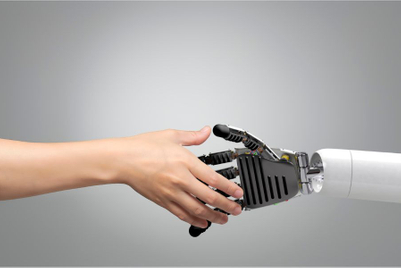.jpg&h=570&w=855&q=100&v=20250320&c=1)
'New-age agency'. We hear this term everywhere—in pitches, on panels, on LinkedIn. But what does it actually mean?
In 2025, when consumer behaviour is shifting faster than algorithms, being 'digital' is no longer enough. Most brands do not need an all-purpose agency anymore—they need one that listens better, moves faster, and builds with more care.
Over the years, working with brand founders, marketers, and lean teams across categories, I have noticed a clear pattern: The best creative partnerships are not the biggest. They are the ones rooted in strategy, relevance, speed, and empathy.
Here is what, in my view, defines a truly new-age agency in 2025—and why it is different from what worked yesterday.
Strategy that doesn’t feel like a checkbox
Too often, strategy is treated like a deck you rush through before ‘real’ work begins. But in the best creative work I have seen, strategy is not a step—it is the spine.
Yesterday, the strategy was documentation. Today, it’s differentiation.
In 2025, starting a business has never been easier. You do not need a storefront or a team of 20. You need an idea, a website, and an Instagram handle—and you are live.
But that is exactly the challenge. Barriers to entry have dropped. Speed to market has accelerated. And blue ocean markets turn red within weeks. In this landscape, the only real moat is clarity.
Clarity is needed on what space you occupy, who exactly you are for, what habit you are tapping into, what conversations you want to own, and where to reach your audience while they scroll, search, snack, or share.
We are in an age where brands are being built digital-first. That means less time, more noise, and no room for confusion.
Strategy today is not about being clever. It is about being unmistakably clear—and incredibly consistent. Once you have that, everything else—content, design, campaigns—flows with intention.
Culture is currency
Trends come and go; but cultural fluency makes work stick. A few years ago, campaigns were planned quarterly.
Today, cultural relevance can expire by the time your creative hits the feed. And the stakes are higher than ever.
We are building brands in a world where Gen Z does not just consume culture—they shape it. They have zero tolerance for tone-deafness. They notice who is showing up, how they are showing up, and why. Being 'cancelled' is not theoretical—it is real. And it has consequences.
You cannot just borrow relevance anymore. You must belong to it.
That means being fluent in values, timing, subtext; knowing when to speak, when to stay silent, and when to create from within, not just respond from the outside. Culture is not something to reference anymore. It is something you need to build from inside.
Empathy is a superpower
Empathy used to be considered a soft skill. Now, it is one of the sharpest tools in branding.
Ten years ago, a lack of empathy may have gone unnoticed. A slightly off ad, a generic message—it may have slipped past. But not anymore.
Today, screenshot of every post can be captured and shared. Every audience is also a community.
And when brands misstep, it is not private—it is public. We are in the age of comment sections, boycott hashtags, quote tweets—and public celebration. When a brand gets it right, audiences reward it with loyalty and amplification.
Empathy shows up in tone, design, packaging, community—everything. It is not sentimental. It is strategic. In 2025, empathy is the new social currency. Audiences do not just buy products; they buy values. And empathy is what they notice first.
Tech that amplifies, not overwhelms
Having a tech stack is table stakes. The real question is: are you using it to create better work? Earlier, tech was used for scale. Today, it is used to think better—to move faster and free up time for insight. The smartest teams do not talk about tools.
They integrate them—using AI, automation, and analytics to speed up testing, strengthen storytelling, and remove inefficiency.
When used well, tech fades into the background and lets better ideas shine. The best use of technology today is not about automation; it is about amplification.
Agility over process worship
The old agency model valued layered approvals and long timelines. But the landscape has shifted.
Ten years ago, large brands set the pace. Today, it is done by founder-led startups—and they move fast.
Launches happen in weeks. Messaging shifts overnight. Campaigns adapt based on comments—not quarterly reviews.
Increasingly, you are working directly with founders—people who are building in real time and expect you to keep up. They value speed, responsiveness, and creative conviction over process-heavy polish.
In 2025, agility is not an edge—it is a baseline expectation. Momentum often beats perfection. And the ability to adapt builds real trust.
Bridging strategy and design
There is often a gap between brand strategy and execution. One team defines the tone, another writes the copy, and someone else designs the visuals. That does not work anymore.
With leaner teams and compressed budgets, strategy and execution have to co-create — not hand off. Everyone must be sitting at the same table, solving the same problem from multiple angles. The best creative work looks cohesive because it was born from shared clarity.
Strategy answers the 'why'. The design makes people feel it. More than lean and fast—it’s about care.
A new-age agency is lean, fast, and plugged in. But that’s the baseline.
The ones that truly stand out in 2025 are the ones that bring care. Care in how they listen, what they build, and what they put into the world. Because this work no longer lives on decks and ad films. It lives in culture. It shapes how people feel, think, behave—and sometimes, what they believe.
That is the real value of creative work today. And that is the kind of work that still feels worth doing.

— Pooja Goyal, founder, Vamos Digital.


.jpg&h=334&w=500&q=100&v=20250320&c=1)
.jpg&h=334&w=500&q=100&v=20250320&c=1)
.jpg&h=334&w=500&q=100&v=20250320&c=1)

.jpg&h=334&w=500&q=100&v=20250320&c=1)

.jpg&h=334&w=500&q=100&v=20250320&c=1)


.jpg&h=334&w=500&q=100&v=20250320&c=1)
.jpg&h=268&w=401&q=100&v=20250320&c=1)

.jpg&h=268&w=401&q=100&v=20250320&c=1)


.jpg&h=268&w=401&q=100&v=20250320&c=1)

.png&h=268&w=401&q=100&v=20250320&c=1)
